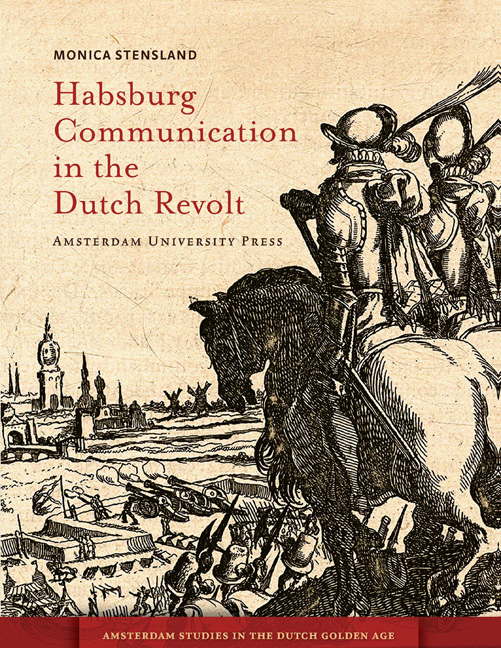Book contents
- Frontmatter
- Dedication
- Contents
- Acknowledgements
- List of Abbreviations
- Notes on References and Translations
- Introduction
- Rooting out Heresy and Rebellion, 1567-1572
- From Rebellion to War, 1572-1576
- The Breakdown of Royal Authority, 1576-1578
- Communicating Reconciliation, 1578-1585
- Losing the Peace, 1585-1595
- A New Beginning, 1596-1609
- Conclusion
- Notes
- Bibliography
- Illustration Credits
- Index
- Frontmatter
- Dedication
- Contents
- Acknowledgements
- List of Abbreviations
- Notes on References and Translations
- Introduction
- Rooting out Heresy and Rebellion, 1567-1572
- From Rebellion to War, 1572-1576
- The Breakdown of Royal Authority, 1576-1578
- Communicating Reconciliation, 1578-1585
- Losing the Peace, 1585-1595
- A New Beginning, 1596-1609
- Conclusion
- Notes
- Bibliography
- Illustration Credits
- Index
Summary
We began this book by noting the tendency to dismiss Habsburg public communication during the Dutch Revolt as non-existent or of bad quality. It should now be clear, however, that the Habsburg regime remained highly visible on the public scene, and that there was considerable awareness among members of the regime of what was said in rebel pamphleteering and what the effects of this might be, as well as concerns about how best to respond to it.
But awareness of dissident pamphleteering took a full ten years to translate into active pamphleteering on the part of the regime. When it finally did happen, it was because all the traditional channels of communication were no longer in Habsburg control. Initially, the regime had fallen back on its tried and tested multimedia tradition, which was overwhelmingly centred on oral rather than written communication. Thus, the problems of heresy and rebellion were continually tackled in public through edicts, punishment rites and public festivities whenever there was a success to celebrate. All these channels allowed the regime to proclaim its position with regard to religious and political dissent, and to make clear what types of behaviour it did not regard as compatible with obedience to the king and God. If William of Orange made a big point of claiming to be fighting for king and country, then Alva's frequent proclamations made it very clear that that was no more than a criminal illusion.
The first decade of the Revolt was marked by the two sides arguing their respective cases on completely different platforms. Orange and the rebels could rely on no other mass medium than pamphlets (although manuscript letter campaigns also figured), and as they had no institutional or territorial power base of their own, they had to actively solicit support. This required them to persuade people of their just cause and meant that they had to find arguments that would appeal to the public. The regime, on the other hand, found itself at the opposite end of the spectrum: until the spring of 1572 it was in control of all territory and all institutions and was not concerned with amassing popular support. Instead, it simply wanted to enforce continued obedience. The emphasis was therefore on command and authority, and certainly not on persuasion and appeal.
- Type
- Chapter
- Information
- Habsburg Communication in the Dutch Revolt , pp. 155 - 160Publisher: Amsterdam University PressPrint publication year: 2012



